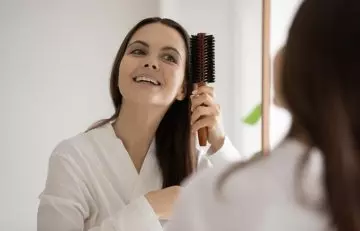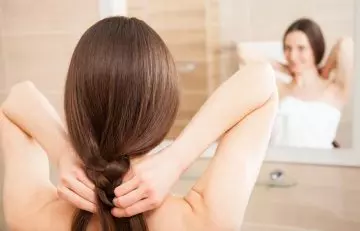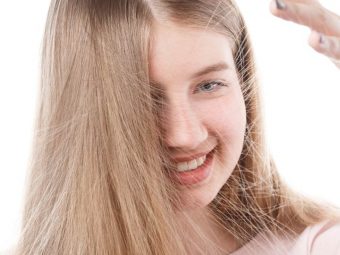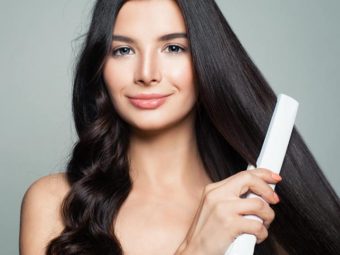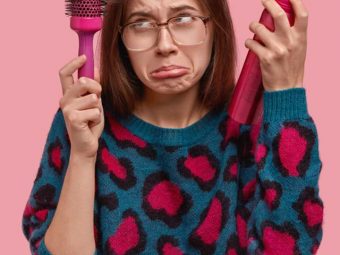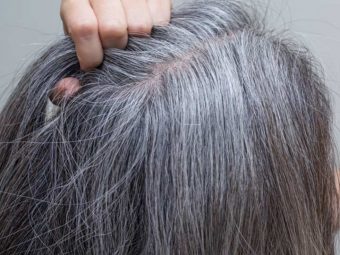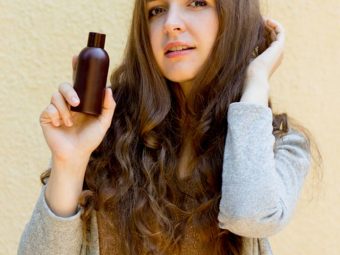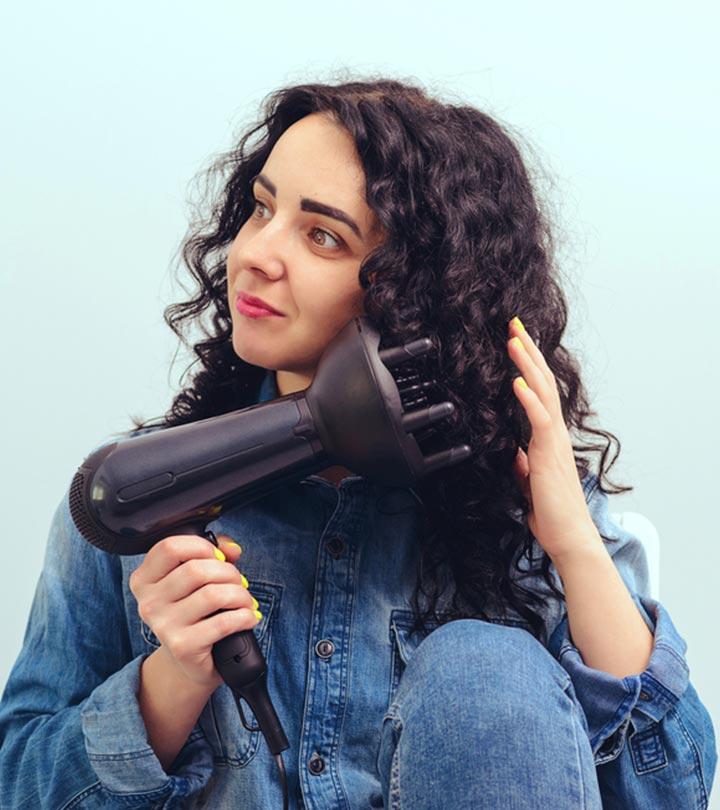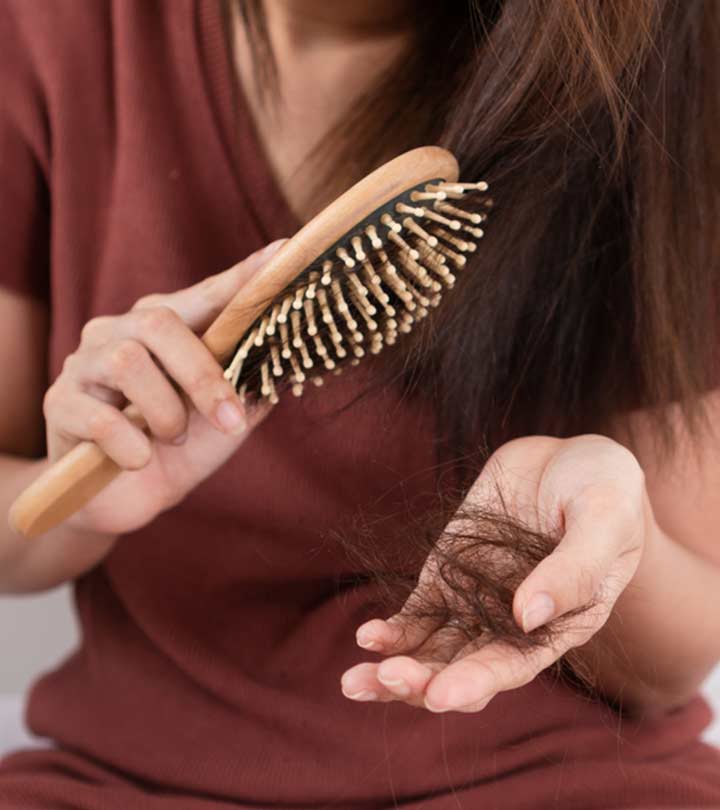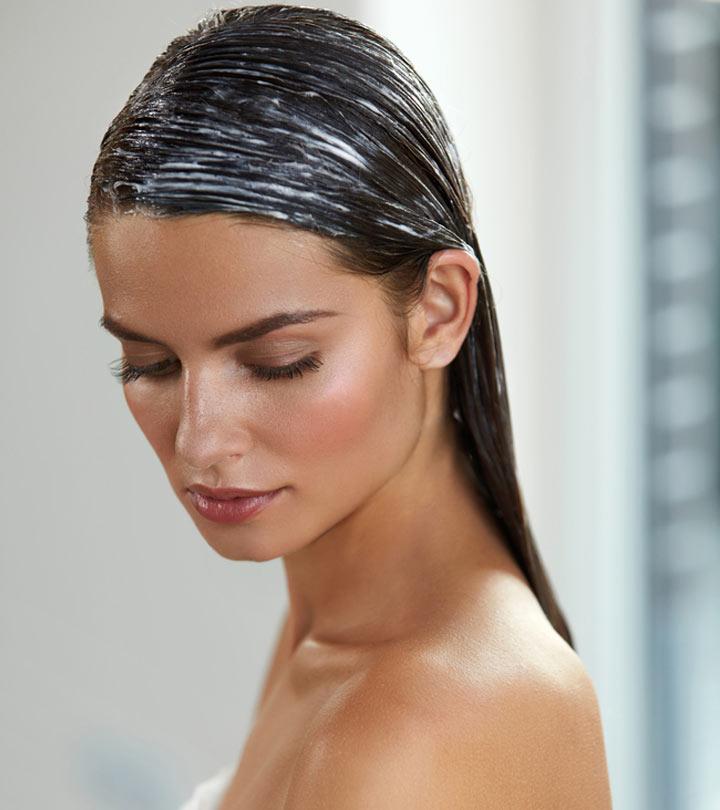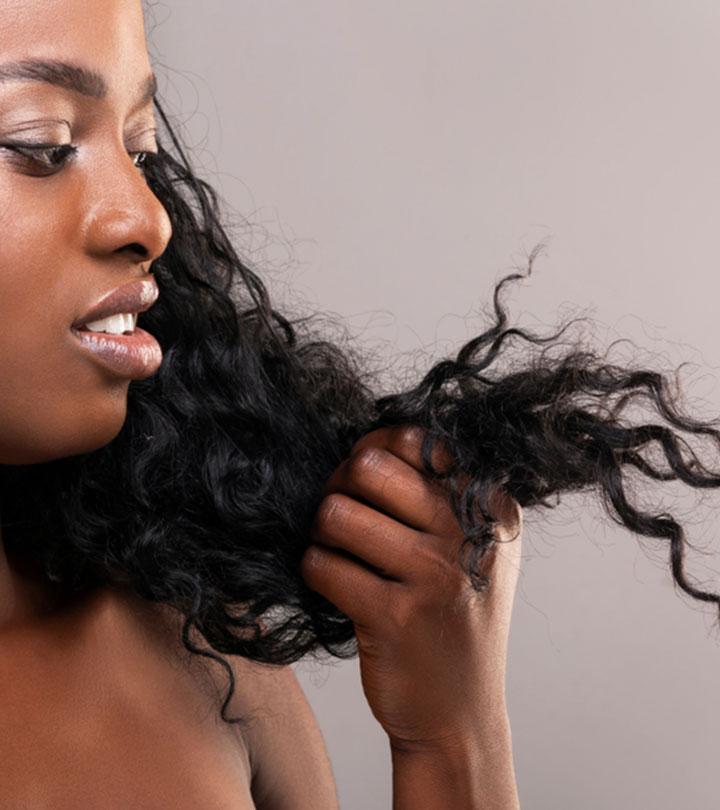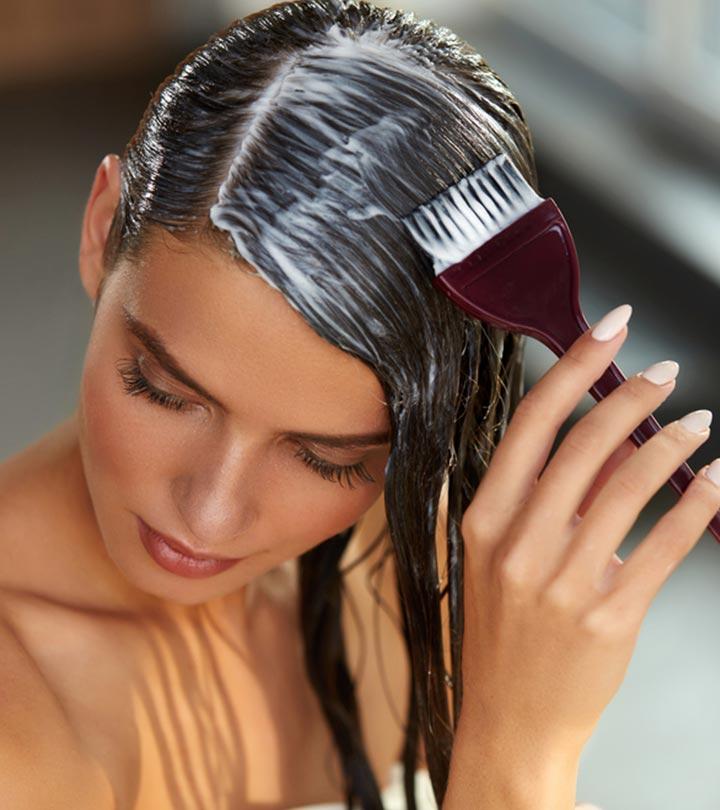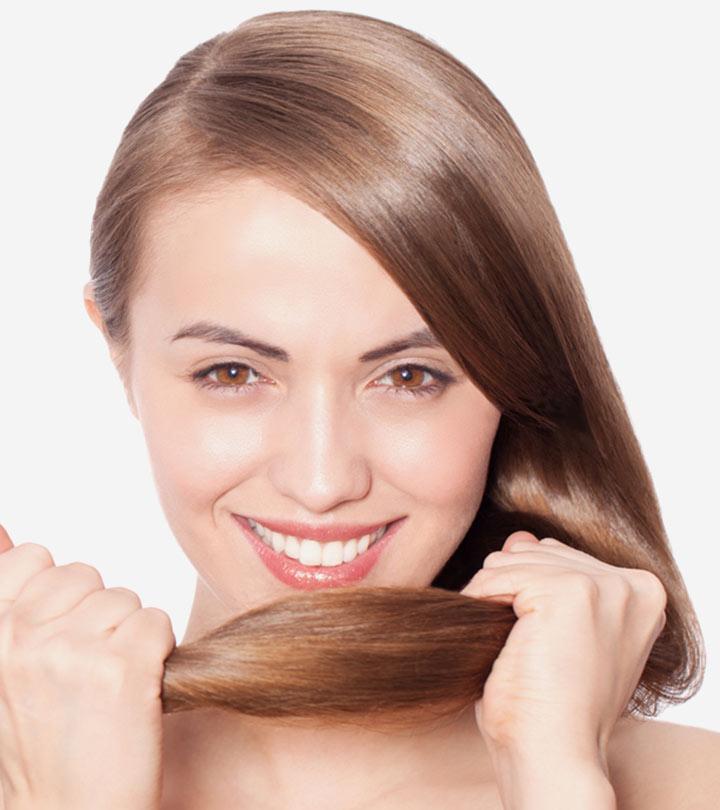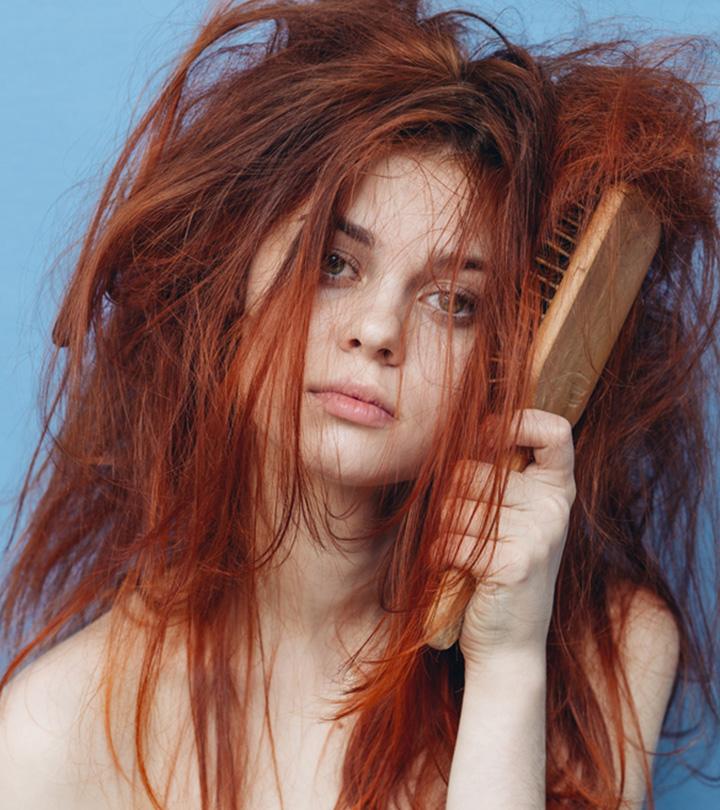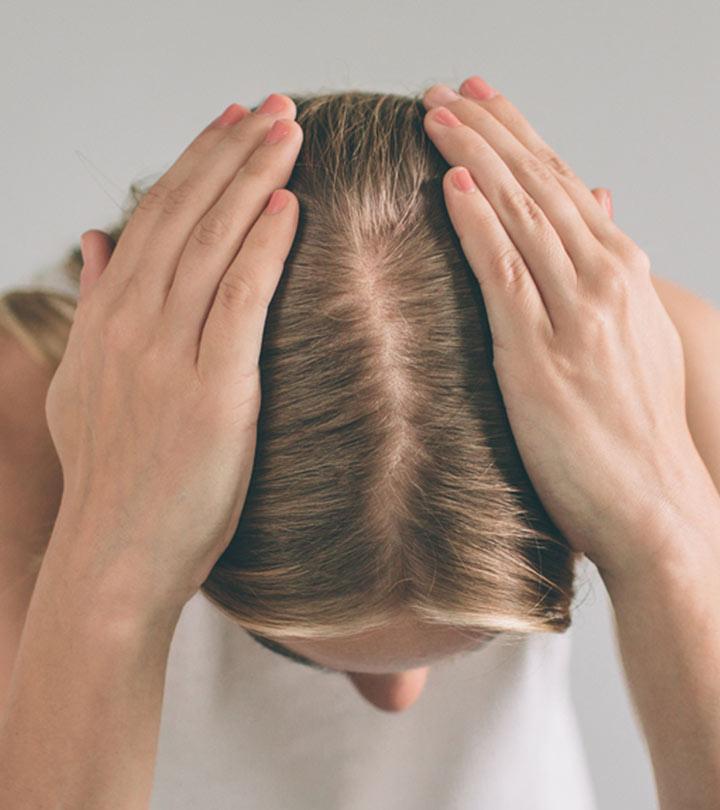How To Tame Flyaways In 7 Simple Ways
A combination of the right hair care products can help keep those rogue strands in place.

Image: Shutterstock
You spend hours washing, blow-drying, and styling your hair to sleek perfection. Then, bam – flyaways ruin your polished hairstyle. Now all you can think about, with sniper-like focus, is how to tame flyaways.
The flyaway struggle is real for people with all hair types. Wispy fine baby hair or broken strands can stray from the rest of your hair and spoil slick, tight, or poker-straight hairstyles. Women with natural textured hair know the pain of styling these flyaways for protective braid styles. These stray strands can be caused due to damage, static, humidity, breakage, and splits. Or they could simply be a sign of new hair growth. Explore the 7 different ways you can discipline those stray flyaways right here. Keep reading to know more.
In This Article
What Are Flyaways?
Flyaways are stray, fine strands of hair that stand out from the rest of the hair, creating a frizzy and unruly appearance. These hair strands tend to be shorter and often result from breakage, split ends, or new hair growth.
Flyaways are especially common in dry or damaged hair, where the outer layer of the hair strand (cuticle) is compromised, causing individual strands to stand apart. Common factors that can exacerbate flyaways include humidity, static electricity, harsh weather, and excessive heat styling. However, there are various serums or oils to tame and smooth the hair to manage them and sport a polished look.
Now as we know what exactly are flyaways, let’s uncover the causes of these flyaways. So let’s dive into it!
What Causes Flyaways?
Heat damage, new baby hair strands around your hairline, and static electricity are the three main culprits causing flyaways.
A lot of heat styling and chemical processing makes the hair brittle and causes hair breakage. These broken strands often pop up with the wind or due to static electricity, causing flyaways. Even the tiny baby hair growth with thinner and shorter strands can give you a frizzy look.
Product buildup on the scalp and improper washing can aggravate flyaways. They become more noticeable in the winter as static electricity is higher due to low or no air humidity. Scroll down to find out the ways to smooth your flyaways.
How To Get Rid Of Flyaways
1. Get The Right Hair Care Products
It starts in the shower! Choosing the right hair care products suitable for your hair type is crucial. Get a silicone-based and hydrating leave-in conditioner to deal with frizz. It coats the hair fiber, making it less prone to static. If you have split ends and brittle hair, use a nourishing hair mask or leave-in treatment to prevent breakage. Hair serums also help minimize frizz and static hair, while a good hairspray prevents short hair strands from going astray.
A hot oil massage with coconut oil can work wonders. Coconut oil reduces protein loss, penetrates the hair shaft, nourishes it, and keeps it healthy (1).
2. Avoid Combing With Plastic Hair Brush
Plastic hair brushes are harsh on the strands and may cause breakage. They also encourage static. Hence, start using natural bristle brushes and combs to prevent hair breakage and flyaways.
Tip: Always use a serum when combing. It reduces tangles, softens the hair, and keeps it smooth, glossy, and manageable.
3. Use A Microfiber Towel To Dry Your Hair
Avoid using cotton bath towels on your hair. They may feel soft and fluffy on your skin but may tangle your hair, causing frizz, breakage, and flyaways. Microfiber towels are thin, gentle on the hair, and have excellent water-absorbing power. These towels also reduce the drying time, in turn, minimizing the blow-dry time and heat damage.
4. Avoid Using Heat-Styling Tools
Heat-styled hair looks gorgeous, but using heat-styling tools excessively may cause hair damage and flyaways. Avoid using heat-styling tools at high temperatures. When blow drying, use the cool-shot setting.
The best way is to go heat-free. Try using anti-static brushes, heat protectants, and frizz-fighting products to prep your hair and maintain the style minus flyaways. Use a wide tooth comb to prevent stretching the hair.
Keep In Mind: Never blow dry your hair unless it is an emergency. Blow drying can cause dryness, loss of hair color, and make the hair rough (2). Always use heat protectants. They create a barrier between the heat-styling tools and the hair to protect the cuticles.
5. Reduce Static With Dryer Sheets
Hair can pick up static when it rubs against other materials. You can use dryer sheets to neutralize static and smooth flyaways. Swipe a dryer sheet along your hair to minimize flyaways. You will also get anti-frizz sheets on the market to control flyaways and add shine to the hair. However, this method is not advisable due to the chemicals present in the dryer sheets.
6. Go For A Haircut
Split ends and damaged hair may cause flyaways. Trimming your hair is the best way to deal with them. It helps prevent hair breakage and encourages healthy hair growth. Trim your hair half an inch off the bottom every four to eight weeks.
7. Braid Your Hair
If you cannot tame the flyaways, hide them with braided hairstyles. The flyaways against the weaved pattern provide a beautiful contrast. You can go for fishtail braids or crown braids. Braiding also helps manage your long tresses and goes well with any outfit and occasion.
 Quick Tip
Quick TipIf your hair is growing, we are sure some sections can be very annoying. You will have frizzy new hair growth on all sides and do not want to cut it off because you love your hair. So what do you do? Simple! Just braid it up! You may also try these hacks.
On-The-Go Hacks To Manage Flyaways

- Use Water (Weird, But It Works!)
Misting the hair with water or wiping your tresses with wet hands can flatten the flyaways. So, the next time before that big meeting, if your head looks like you just got electrocuted, try this hack! However, make sure you are not overdoing it.
- Clear Mascara To The Rescue
This is simple yet effective. Brush the flyaways with a clear mascara and spoolie brush to make them disappear.
Elana, a blogger, shared her simple tip to control flyaways and achieve a polished look in her blog. She said,” The best way to tame them, I’ve found, is to use a disposable mascara brush with some hairspray (i).”
- Keep The Hairspray Handy
After styling your hair, use a hairspray to set it and seal the flyaways. Hairsprays provide medium to strong hold to keep the hair in place.
- Use Lip Balms Or Lotions
Cannot find your pomade, and it’s an emergency? Fix the flyaways with lip balms and lotions. Don’t go overboard, or you may end up with greasy hair.
 Quick Tip
Quick TipInfographic: 7 Easy Ways To Tame Flyaways
Flyaways can play spoilsport with your neat, straight hair. At times, they really take away the glory of your hairstyle. Having healthy, hydrated hair and prepping yourself with a hair serum before styling are some of the ways to avoid getting those baby hairs over your forehead. But, if you are looking for some quick fixes, go through the infographic below to learn how to tame your unruly flyaways.

Illustration: StyleCraze Design Team
Flyaways are caused by heat damage, static electricity, and new baby hair growth. Following the tips mentioned above can help you tame flyaways and keep your hair perfectly styled. You must use a silicone-based or hydrating conditioner to curb frizz. Use hair serums to deal with static hair. Don’t use plastic hair brushes to comb and style your hair. Dry your hair with a microfiber towel and avoid using heat styling tools as much as possible. You can also sweep a dryer sheet over your hair to neutralize static and tame flyaways. If all these tips do not work for you, visit a salon for hair smoothing treatments to help reduce frizz and enhance your hair beauty.
Frequently Asked Questions
Should you cut flyaways?
There is no need to cut your flyaways when you can tame them with hair gels, serums, oils, and other styling products.
Are flyaways damaged hair?
Flyaways need not necessarily be damaged hair. Baby hairs, static, humidity, and damage may cause flyaways.
Can my diet affect the occurrence of flyaways?
Yes, your diet can affect the occurrence of flyaways. A well-balanced diet that is rich in vitamins and minerals is essential for healthy hair.
Key Takeaways
- A flyaway is a stray fine or broken strand of hair that separates from the rest of your locks, ruining neat hairstyles.
- Flyaways are primarily caused by heat damage, baby hair strands, and static electricity.
- Avoid using plastic brushes and use a microfiber towel to dry your hair to prevent flyaways.
- You can use hair mascara or hairspray to tame flyaways.
Tired of flyaways ruining your look? Watch the following video to learn some easy ways to tame them and get the perfect style easily.
Personal Experience: Source
StyleCraze's articles are interwoven with authentic personal narratives that provide depth and resonance to our content. Below are the sources of the personal accounts referenced in this article.
i. #BeautyTipTuesday: Flyawayshttps://beautybill.blogspot.com/2014/03/beautytiptuesday-flyaways.html
References
Articles on StyleCraze are backed by verified information from peer-reviewed and academic research papers, reputed organizations, research institutions, and medical associations to ensure accuracy and relevance. Read our editorial policy to learn more.
- Hair Cosmetics: An Overview
https://www.ncbi.nlm.nih.gov/pmc/articles/PMC4387693/ - Hair shaft damage from heat and drying time of hair dryer
https://pubmed.ncbi.nlm.nih.gov/22148012/





